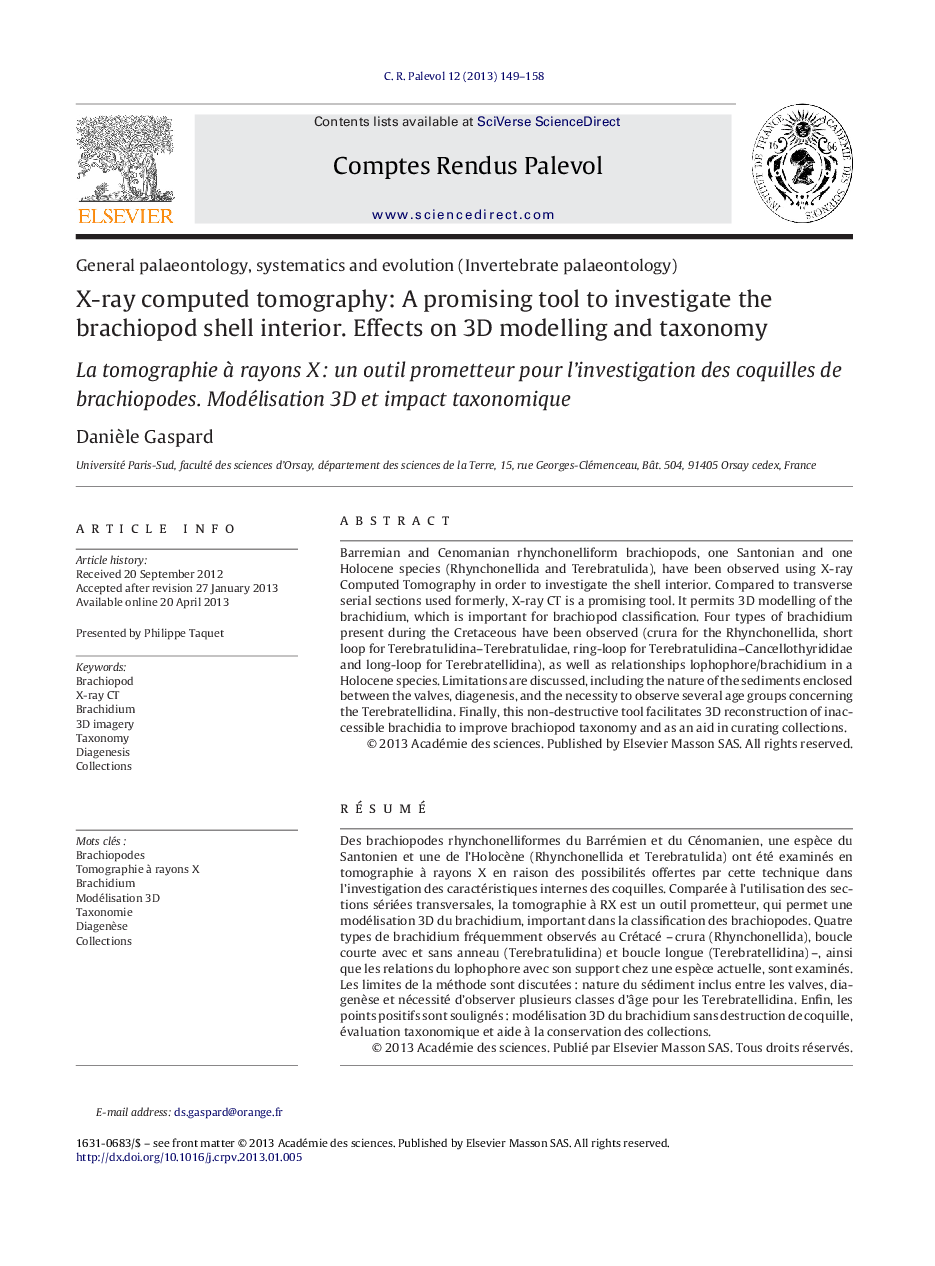| کد مقاله | کد نشریه | سال انتشار | مقاله انگلیسی | نسخه تمام متن |
|---|---|---|---|---|
| 4746058 | 1359803 | 2013 | 10 صفحه PDF | دانلود رایگان |

Barremian and Cenomanian rhynchonelliform brachiopods, one Santonian and one Holocene species (Rhynchonellida and Terebratulida), have been observed using X-ray Computed Tomography in order to investigate the shell interior. Compared to transverse serial sections used formerly, X-ray CT is a promising tool. It permits 3D modelling of the brachidium, which is important for brachiopod classification. Four types of brachidium present during the Cretaceous have been observed (crura for the Rhynchonellida, short loop for Terebratulidina–Terebratulidae, ring-loop for Terebratulidina–Cancellothyrididae and long-loop for Terebratellidina), as well as relationships lophophore/brachidium in a Holocene species. Limitations are discussed, including the nature of the sediments enclosed between the valves, diagenesis, and the necessity to observe several age groups concerning the Terebratellidina. Finally, this non-destructive tool facilitates 3D reconstruction of inaccessible brachidia to improve brachiopod taxonomy and as an aid in curating collections.
RésuméDes brachiopodes rhynchonelliformes du Barrémien et du Cénomanien, une espèce du Santonien et une de l’Holocène (Rhynchonellida et Terebratulida) ont été examinés en tomographie à rayons X en raison des possibilités offertes par cette technique dans l’investigation des caractéristiques internes des coquilles. Comparée à l’utilisation des sections sériées transversales, la tomographie à RX est un outil prometteur, qui permet une modélisation 3D du brachidium, important dans la classification des brachiopodes. Quatre types de brachidium fréquemment observés au Crétacé – crura (Rhynchonellida), boucle courte avec et sans anneau (Terebratulidina) et boucle longue (Terebratellidina) –, ainsi que les relations du lophophore avec son support chez une espèce actuelle, sont examinés. Les limites de la méthode sont discutées : nature du sédiment inclus entre les valves, diagenèse et nécessité d’observer plusieurs classes d’âge pour les Terebratellidina. Enfin, les points positifs sont soulignés : modélisation 3D du brachidium sans destruction de coquille, évaluation taxonomique et aide à la conservation des collections.
Journal: Comptes Rendus Palevol - Volume 12, Issue 3, March 2013, Pages 149–158